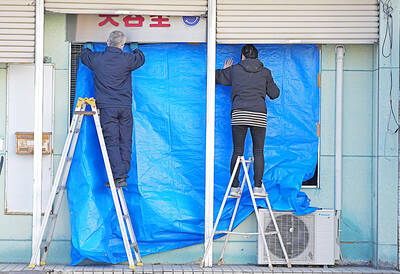Taiwan is a key member in the Indo-Pacific region and has long shared the benefits of regional stability with Australia, the UK and the US, the Ministry of Foreign Affairs said yesterday after the three states created an enhanced trilateral security partnership called “AUKUS.”
“Through AUKUS, our governments will strengthen the ability of each to support our security and defense interests,” including information and technology sharing, leaders of the member states said in a statement on Wednesday.
“The endeavor we launch today will help sustain peace and stability in the Indo-Pacific region,” they said.
The ministry yesterday reiterated its shared values with like-minded partners.
Taiwan is in a pivotal position in the first island chain, and has long shared the benefits of regional peace and stability with Australia, the UK, the US and other like-minded states, ministry spokeswoman Joanne Ou (歐江安) said in a statement.
Based on the foundations of the US’ Taiwan Relations Act and the “six assurances,” the nation would continue to deepen its partnership with the US to defend a rules-based international order, as well as peace, stability and prosperity in the Taiwan Strait and in the Indo-Pacific region, Ou said.
The emergence of AUKUS shows that China’s “wolf warrior” diplomacy is not accepted by the international community, the Democratic Progressive Party (DPP) said separately.
Since China’s opening up in the 1970s, foreign businesses settling in China have had to endure unfair treatment by the Chinese government because of its protectionism, DPP caucus secretary-general Tsai Shih-ying (蔡適應) said.
Countries have to bear China’s dumping practices even as it boosts its military expansionism through economic growth, Tsai said.
China has been poaching resources with its “wolf warrior” diplomacy and military expansionism, which has alarmed many countries, DPP caucus director-general Liu Shyh-fang (劉世芳) said.
Taiwan is part of a global alliance of democratic countries and plays a vital role in promoting cooperation in trade and security, and protecting human rights, Liu said.

Taiwanese were praised for their composure after a video filmed by Taiwanese tourists capturing the moment a magnitude 7.5 earthquake struck Japan’s Aomori Prefecture went viral on social media. The video shows a hotel room shaking violently amid Monday’s quake, with objects falling to the ground. Two Taiwanese began filming with their mobile phones, while two others held the sides of a TV to prevent it from falling. When the shaking stopped, the pair calmly took down the TV and laid it flat on a tatami mat, the video shows. The video also captured the group talking about the safety of their companions bathing

US climber Alex Honnold is to attempt to scale Taipei 101 without a rope and harness in a live Netflix special on Jan. 24, the streaming platform announced on Wednesday. Accounting for the time difference, the two-hour broadcast of Honnold’s climb, called Skyscraper Live, is to air on Jan. 23 in the US, Netflix said in a statement. Honnold, 40, was the first person ever to free solo climb the 900m El Capitan rock formation in Yosemite National Park — a feat that was recorded and later made into the 2018 documentary film Free Solo. Netflix previewed Skyscraper Live in October, after videos

Starting on Jan. 1, YouBike riders must have insurance to use the service, and a six-month trial of NT$5 coupons under certain conditions would be implemented to balance bike shortages, a joint statement from transportation departments across Taipei, New Taipei City and Taoyuan announced yesterday. The rental bike system operator said that coupons would be offered to riders to rent bikes from full stations, for riders who take out an electric-assisted bike from a full station, and for riders who return a bike to an empty station. All riders with YouBike accounts are automatically eligible for the program, and each membership account

A classified Pentagon-produced, multiyear assessment — the Overmatch brief — highlighted unreported Chinese capabilities to destroy US military assets and identified US supply chain choke points, painting a disturbing picture of waning US military might, a New York Times editorial published on Monday said. US Secretary of Defense Pete Hegseth’s comments in November last year that “we lose every time” in Pentagon-conducted war games pitting the US against China further highlighted the uncertainty about the US’ capability to intervene in the event of a Chinese invasion of Taiwan. “It shows the Pentagon’s overreliance on expensive, vulnerable weapons as adversaries field cheap, technologically